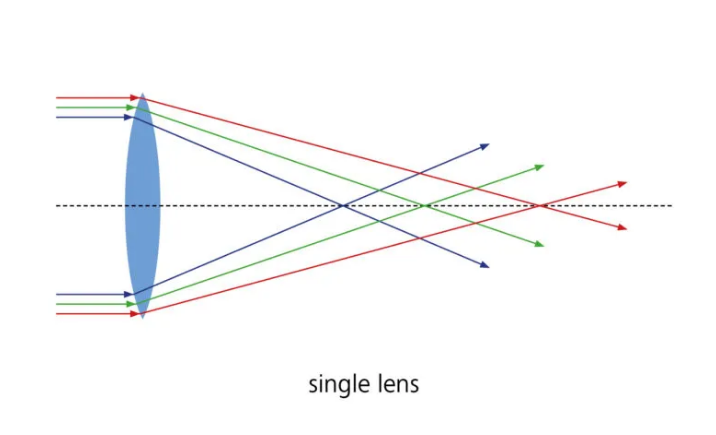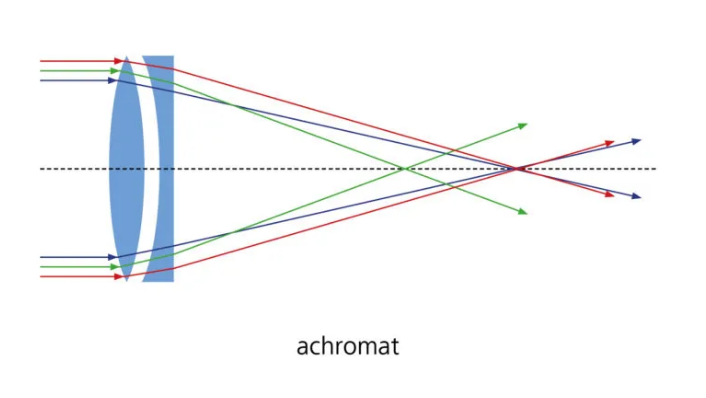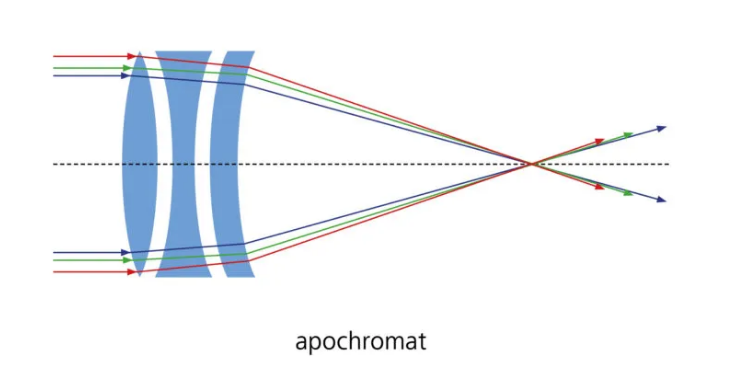Achromatic and apochromatic lenses
Understanding chromatic aberration:
Before delving into the differences between achromatic lenses and apochromatic lenses, it is crucial to understand the concept of chromatic aberration. Chromatic aberration, commonly referred to as color fringing, is an optical phenomenon that occurs when light of different colors does not converge to a single focal point after passing through a lens or other optical element. This results in blurred or distorted images with noticeable color edges, especially at high magnifications.

Achromatic Lens:
Achromatic optical systems are designed to reduce chromatic aberration by combining two or more lens elements made of different types of glass with different dispersion characteristics. Typically, achromatic lenses consist of a lens element made of crown glass with lower dispersion and a lens element made of flint glass with higher dispersion. The combination of these elements helps bring two different wavelengths of light (usually red and blue) to a common focus, significantly reducing chromatic aberration.

However, achromatic lenses are not entirely free from chromatic aberration. While they show significant improvement in image quality compared to single-element lenses, they may still exhibit residual color fringing, especially at higher magnifications or when operating over a wider wavelength range.
Apochromatic Lenses:
Apochromatic lenses optical systems further perform color correction by employing multiple lens elements with distinct dispersion characteristics. A apochromatic lens typically consists of three lens elements: crown glass, flint glass, and extra-low dispersion (ED) glass. This intricate lens arrangement, meticulously calculated, brings light of three primary wavelengths (red, green, and blue) to a common focus, thereby significantly minimizing chromatic aberration.

In apochromatic lenses, the use of ED glass elements significantly reduces secondary color fringing, resulting in images with outstanding color accuracy and clarity. Apochromatic lenses are particularly favored by photographers, astronomers, and microscopy enthusiasts who demand the highest levels of image quality, especially when capturing intricate details or working under challenging lighting conditions.
We can manufacture lenses in any optical material required. Please contact us with your specific requirements.

